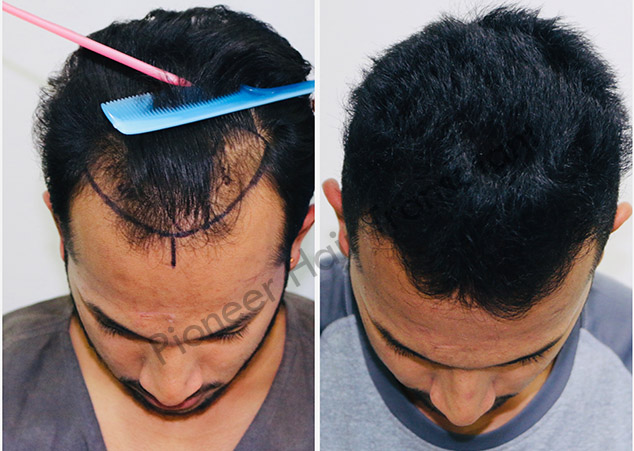
Repair Hair Transplant in Bangalore
At Pioneer Hair Transplant CLinic we understand the importance of a successful hair transplant and the impact it has on your confidence and well-being. Unfortunately, not all hair transplants yield the desired results, and that's where our expertise comes in. A Hair transplant Repair normally implies a scar that is cosmetically inadmissible. Best Repair Hair Transplant in Bangalore includes the removal of bigger follicular units (or fittings) and embedding them in the no hair zone of the scalp. The spot mark is cover in the event that the system procedure is applied with the FUT hair transplant or the combination of the FUT+FUE technique. At the Pioneer Hair Transplant Clinic, the repair or revision session of hair transplant is routinely carried out.

How Hair Transplant Repair Work
In order for a hair transplant to be done effectively, it must be planned such that the patient's head will always seem natural after the procedure. For the results to look as natural as possible, our designs blend in with the surrounding hair and take the possibility that a patient may lose all of their hair into consideration. Therefore, a hair transplant should be appropriately planned to account for the patient's potential future hair loss.
What are the challenges of the repair hair transplant?
A repair transplant is generally harder than the primary method for the below reasons
- Part of the donar are has previously been harvested. Heading, flexibility have been adjusted and this makes the strategy harder and the crosscut rate higher.
- The recipient area already has some grafts. It is critical to distinguish which of these are valuable, and which could should be taken out.
- The recipient area is scarred from the first surgery. Thus blood supply may be modified. Now and again more than one meeting may be required for fix.
- Sometimes, it isn't clear why first transfer failed- there are dermal or hormonal or genetic influence which influence the grafts
Our Hair Transplant Repair Services
- Part of the donar are has previously been harvested. Heading, flexibility have been adjusted and this makes the strategy harder and the crosscut rate higher.
- Correction of Hairline Irregularities: We specialize in correcting unnatural or irregular hairlines, ensuring a symmetrical and aesthetically pleasing result.
- Scar Revision: For clients with visible scars from previous procedures, our scar revision techniques aim to minimize and conceal scarring for a more natural appearance.
- Density Enhancement: If you are unsatisfied with the density of your previous transplant, we employ techniques to enhance hair density while maintaining a natural look.
- Natural Hairline Recreation: Our surgeons excel in recreating a natural-looking hairline, paying attention to angles, direction, and distribution to achieve a seamlessly blended result.
Procedure of a Repair Hair Transplant
- Graft Removal: The incorrectly implanted hairs, which seem unnatural, are removed in this process, and implantation is then redone using the freshly harvested graft in a natural pattern. Slits are properly and properly closed. Grafts that have been removed are inserted into a brand-new slit. Similar to this, each follicular unit is transplanted without wasting any to the scalp's no-hair zone. The exercise is repeated in some revision situations, if necessary, until all the incorrect grafts are removed, covering the area with the required amount of grafts in a natural pattern to provide the desired aesthetic result of the treatment.
- Camouflage New grafts are again retrieved and implanted into the front and top of the scalp to replace a hair that was improperly transplanted. Additionally, this is a completely personalised process that varies from person to person. Only when the donor area is not exhausted is camouflage an effective method of hair transplant healing. A second session may be necessary in some circumstances. When the hair growth from the first repair session is finished, which takes 8 to 12 months, the second session is carried out.
The quantity of grafts used in the implantation to achieve the high-density hair transplant aims to determine the cost of the revision hair transplant.

